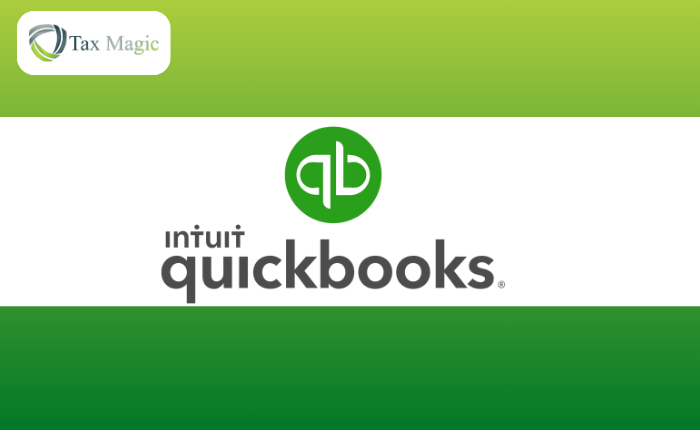Overview
1. Until 2018, taxpayers were allowed personal exemptions reducing their adjusted
gross income for themselves and any of their qualified dependents. From 2018
through 2025, the exemption amount is $0; in essence, the personal exemption is
eliminated for these years. For that reason, this review course has removed all
coverage of personal exemptions.
a. However, the rules pertaining to qualified dependents still apply because
dependency status affects more than just the exemption. For example, as
discussed in Subunit 1.2, having dependents is required for qualifying for
Head of Household. It is also required to qualify for the Child Tax Credit and
certain Earned Income Credit amounts. Therefore, it is important to learn the
rules qualifying someone as a dependent of the taxpayer.
Dependent Status
2. To qualify as a dependent, the individual must be a qualifying child or a qualifying
relative. A spouse is never considered a dependent.
Qualifying Child
a. To be a qualifying child, four tests must be met:
1. Relationship – The child must be the taxpayer’s son, daughter,
stepson, stepdaughter, brother, sister, stepbrother, stepsister, or any
descendant of any such relative. Adopted individuals and eligible
foster children meet the relationship test.
NOTE: An adopted child is always treated as the taxpayer’s own child; i.e., the term “child”
includes “adopted child.”
2. Age – The child must, at the end of the year, be (a) under the age of 19,
(b) a full-time student under the age of 24, or (c) any age if
permanently and totally disabled. Full-time student status requires 5
months of enrollment or registration at a school or in an on-farm
training course.
3. Principal Residence – The child must have the same principal place of
abode as the taxpayer for more than half of the year.
4. Not Self-Supporting – The child must not have provided over half of his
or her own support.
Qualifying Relative
b. To be a qualifying relative, the following tests [1.-4.] must be met:
1. Relationship or residence. An individual must satisfy either a
relationship or a residence requirement to qualify as a dependent.
a. Residence. The residence requirement is satisfied for any
individual who merely resides with a potential claimant (of the
dependent) for the entire tax year.
b. Relationship. The relationship requirement is satisfied by
existence of an extended (by blood) or immediate (by blood,
adoption, or marriage) relationship. The relationship need be
present to only one of the two married persons who file a joint
return. Any relationship established by marriage is not treated
as ended by divorce or by death.
i.
ii.
Extended relationships: grandparents and ancestors;
grandchildren and descendants; uncles or aunts;
nephews or nieces
Immediate relationships
• Parent: natural, adoptive, stepparent; father or
mother-in-law
• Child: natural, adoptive, stepchild; son or
daughter-in-law; foster child
• Sibling: full or half brother or sister; adoptive
brother or sister; stepbrother or sister; brother or
sister-in-law
NOTE: A cousin can only be claimed as a dependent if (s)he lived with the taxpayer all year.
2. Gross income of the individual (to be claimed as a dependent) must
be less than $4,700 for 2023.
a. Gross income for the gross income dependency test is all
income that is received but not exempt from tax.
i.
Any expenses from rental property do not reduce rental
income.
ii.
Gross income from a business is the total net sales
minus the cost of goods sold, plus any miscellaneous
income from the business.
iii.
iv.
v.
Gross income includes all unemployment
compensation.
Social Security benefits are generally excluded from
gross income unless additional income is received.
Municipal bond interest is exempt from tax.
EXAMPLE 1-11
Qualifying Relative
Allan Cripes, 22, earned $5,000 working part time while attending
school full time. Allan lives with Doris, his cousin, the entire year.
Doris pays more than one-half of Allan’s support. Allan will not be a
dependent of Doris since Allan exceeds $4,700 of gross income.
3. Support. The person who may claim an individual as a dependent
must provide more than 50% of the (economic) support of the
individual for the year.
a. Support includes welfare benefits, Social Security benefits,
and any support provided by the dependency exemption
claimant, the dependent, and any other person.
b. Only amounts provided during the calendar year qualify as
support. Amounts paid in arrears (i.e., payment for child
support for a previous year) are not considered as support for
the current year.
c. Support includes money and items, or amounts spent on
items, such as
i.
ii.
iii.
iv.
Food, clothing, shelter, utilities
Medical and dental care and insurance
Education
Child care, vacations, etc.
d. Excluded. Certain items (or amounts spent on them) have not
been treated as support, e.g., scholarship received by a
dependent, taxes, medical insurance benefits, and life
insurance premiums.
i.
The purchase of capital items (e.g., furniture,
appliances, and cars) cannot be included in total
support if they are purchased for personal and family
reasons and benefit the entire household.
e. The amount of an item of support provided in a form other than
cash is usually its cost, if purchased, or FMV, if otherwise
obtained.
f.
Support received as a single amount is prorated among more
than one possible dependent, e.g., three children.
g. A divorced or separated individual need not meet the support
test if (s)he and the (ex-)spouse meet (or have met)
the following conditions:
i.
ii.
iii.
iv.
Provided more than 50% of the support
Had (between them) custody for more than 50% of the
year
Lived apart for the last half of the year
Did not have a multiple support agreement in effect
NOTE: The parent having custody for more than 50% of the year is entitled to the
dependency exemption, but the dependency exemption may be allocated to the
noncustodial parent if there is an agreement signed by the custodial parent and attached
to the noncustodial parent’s return.
h. Multiple support agreement (Form 2120). One person of a
group that together provides more than 50% of the support of
an individual may, pursuant to agreement, be allowed the
dependency exemption.
i.
ii.
The person must be otherwise eligible to claim the
dependency exemption and must provide more than
10% of the support.
No other person may provide more than 50% of the
support.
iii.
Each other person in the group who provided more than
10% of the support must sign a written consent filed
with the return of the taxpayer who claims the
dependency exemption.
4. The individual must not be a qualifying child of the taxpayer or any
other taxpayer.
a. A child being adopted is eligible to be claimed as a dependent
by the adopting parents if an identifying number for the child is
obtained. Initially, an adoption taxpayer identification number
(ATIN) is assigned.
b. Both a dependent who dies before the end of the calendar year
and a child born during the year may be claimed as
dependents.
Qualifying as a Dependent
c. There are special rules that apply to individuals qualifying as a dependent:
1. Dependent taxpayer test. If an individual meets the requirements to
be classified as a dependent on another person’s tax return, the
individual (dependent) will be treated as having no dependents for the
tax year.
2. Filing status (occasionally referred to as the joint return test). An
individual does not qualify as a dependent on another’s return if the
individual is married and files a joint return.
a. However, such an individual can qualify as a dependent if (s)he
f
iles a joint return solely to claim a refund of withheld tax
without regard to the citizenship test.
EXAMPLE 1-12
Filing by Dependents to Obtain a Refund
Mr. and Mrs. Kind provided more than half the support for their
married daughter and son-in-law who lived with the Kinds all year.
Neither the daughter nor the son-in-law is required to file a 2023 tax
return. They do so only to get a refund of withheld taxes. The Kinds
may claim the daughter and the son-in-law as dependents on
their 2023 joint return.
3. Citizenship or resident. To qualify as a dependent, an individual must
be, for any part of the year, a U.S. citizen, resident, or national, or a
Canadian or Mexican resident.
EXAMPLE 1-13
Citizenship of Dependents
Resident aliens living in the U.S. provide all the support for their four
minor children even though they all live with various relatives in other
countries. One is in Mexico, two others are in Canada, and the fourth
is in Chile. All family members are citizens of Chile. The resident
aliens may claim dependent exemptions for only the three children
residing in Mexico and Canada.
4. Taxpayer identification number. The taxpayer must provide the correct
taxpayer identification number (TIN) of a dependent on the income tax
return.
Overview of the Rules for Claiming a Dependent
d. This table is only an overview of the rules.
• A taxpayer cannot claim any dependents if the taxpayer, or the spouse if filing jointly,
could be claimed as a dependent by another taxpayer.
• A taxpayer cannot claim a married person who files a joint return as a dependent
unless that joint return is only a claim for refund and there would be no tax liability for
either spouse on separate returns.
• A taxpayer cannot claim a person as a dependent unless that person is a U.S. citizen,
U.S. resident alien, U.S. national, or a resident of Canada or Mexico.
• A taxpayer cannot claim a person as a dependent unless that person is the
taxpayer’s qualifying child or qualifying relative.
Tests To Be a Qualifying Child
1. The child must be a son, daughter,
stepchild, foster child, brother, sister, half
brother, half sister, stepbrother, stepsister,
or a descendant of any of them. Adopted
individuals qualify.
Tests To Be a Qualifying Relative
1. The person cannot be the taxpayer’s
qualifying child or the qualifying child of
anyone else.
2. The child must be (a) under age 19 at the
end of the year and younger than the
2. The person either (a) must be related to
the taxpayer in one of the ways listed
previously under Immediate relationships
or (b) must live with the taxpayer all year
taxpayer (or the spouse if filing jointly);
(b) under age 24 at the end of the year, a
student, and younger than the taxpayer (or
the spouse if filing jointly); or (c) any age if
permanently and totally disabled.
3. The child must have lived with the
taxpayer for more than half of the year.
4. The child must not have provided more
than half of his or her own support for the
year.
5. The child is not filing a joint return for the
year (unless that joint return is filed only as
a claim for refund of withheld income tax or
estimated tax paid).
If the child meets the rules to be a qualifying
child of more than one person, only one
person can actually treat the child as a
qualifying child.
as a member of the taxpayer’s household
(and the taxpayer’s relationship must not
violate local law).
3. The person’s gross income for the year
must be less than $4,700.
4. The taxpayer must provide more than
half of the person’s total support for the
year.
About Lesson
Exercise Files



